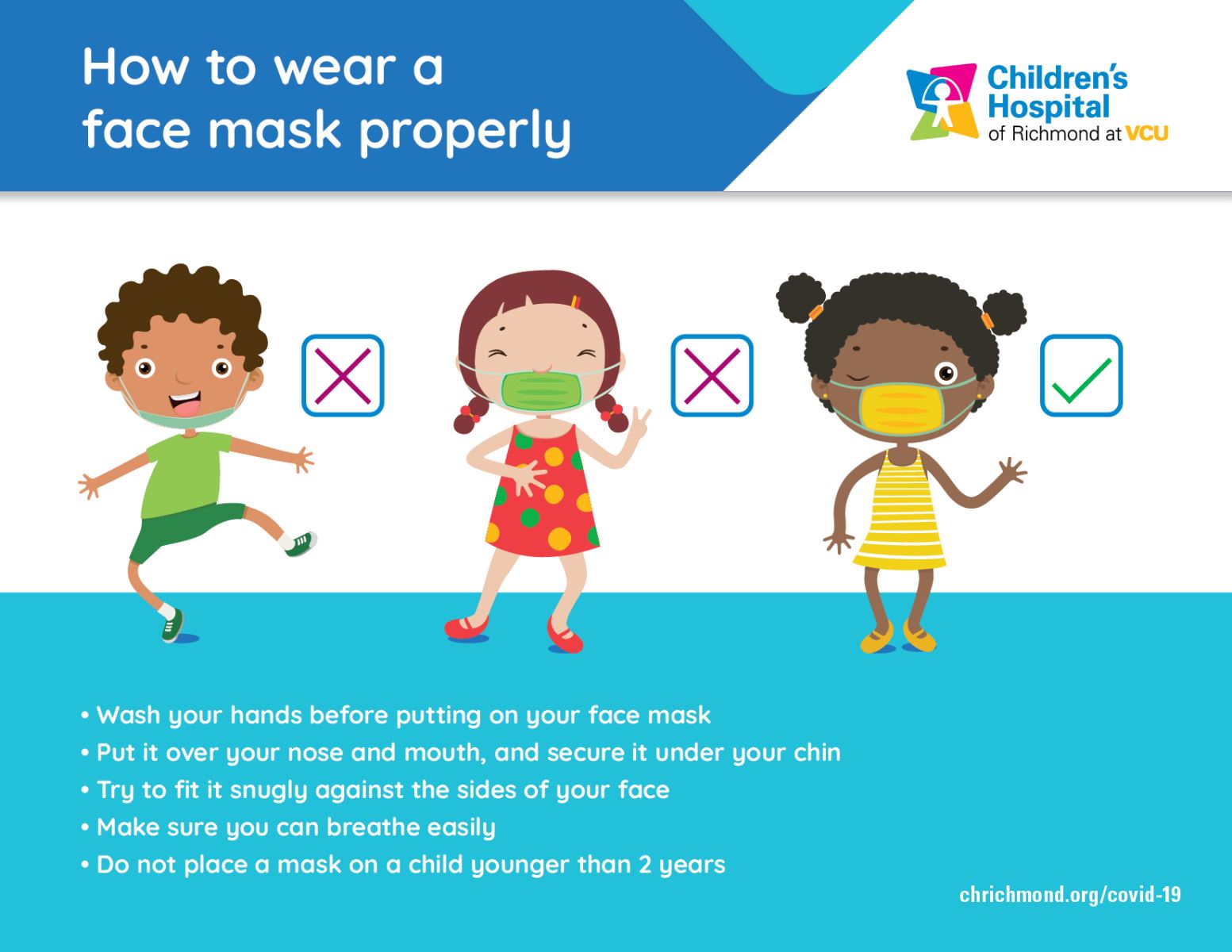
What are the different types of face masks to wear during COVID-19?
Knowing the differences between the types of face masks available can help protect you and your child against COVID-19.
The novel coronavirus that causes COVID-19 spreads easily. When someone coughs, sneezes or talks, respiratory droplets are released into the air. If these droplets contain the virus and make their way to your nose or mouth – either by breathing or coming into contact with a contaminated surface and then touching your face – you can get sick. It’s easy to see how a chain reaction can quickly take place from there – with one person passing the virus to several others, then those people passing to even more people and so on.
The tricky part is that you can spread the virus without knowing it. Many people are asymptomatic (not showing symptoms) or pre-symptomatic (not showing symptoms yet, but they will develop). That’s why the Centers for Disease Control and Prevention recommends wearing masks in public to slow the spread of COVID, particularly when social distancing can be difficult.
But, what’s the difference among the various types of masks and which will provide the protection you and your child need?
*No matter which mask you use, make sure to wear it properly over your nose and mouth every time.
Types of face masks to protect you and your child against the coronavirus (COVID-19)
Cloth masks
Cloth face coverings are what the CDC recommends for everyday use by the general public, including adults and kids. While they don’t completely block particles, they do offer an added layer of protection when it’s difficult to stay six feet from others, such as at the grocery store or pharmacy.
Cloth masks can be purchased, or made at home from common materials. You can use extra fabric you may have on hand, or an old t-shirt, pillow case, tea towel, bandana or scarf. Make it fun by choosing fabric with your child’s favorite color, animal or sports team! The fabric can be secured with ties behind the head or held in place with elastic ear loops (such as rubber bands or hair ties).
There is no one specific way to make a cloth face mask for public use. The CDC offers a few recommendations, including a simple, no-sew method.
For maximum safety, cloth face masks should:
- Fit snugly, but comfortably
- Contain multiple layers of fabric
- Be secured with ties or ear loops
- Allow for unrestricted breathing
- Be washed with hot water after each use
Learn more about why to wear cloth masks and how to encourage kids to do so.
N95 respirators
N95 respirators are tight-fitting masks that block out sprays, splashes and large-particle droplets. They can also filter out 95% of very small particles, such as those in bacteria and viruses. N95 respirators must be evaluated and approved by the U.S. National Institute for Occupational Safety and Health. They also need to be professionally fit-tested to ensure a proper seal around the nose and mouth, which is what provides the maximal protection.
For this reason, as well as their limited availability, N95 respirators primarily should be reserved for health care workers who are caring for patients with infectious diseases. While it would be ideal to replace the N95 mask daily, this has become challenging with the increased demand brought on by COVID-19. VCU Health has responded by developing a method for safely decontaminating and reusing N95 respirators.
Surgical face masks
Surgical masks are typically made of a paper-like material and are designed to block sprays, splashes and large-particle droplets and prevent them from reaching the mouth and nose of others. There is a thin metal strip at the top of the mask that can be bent around the nose.
Because surgical masks are loose-fitting, leakage can occur around the edges. They also do not block tiny particles. You may see health care providers wearing a surgical mask along with a clear face shield to provide extended protection for the eyes and forehead. Surgical masks should be discarded after each use, or sooner if they become visibly soiled.
Other mask options
There are other options for face coverings that can help block some particles.
Dust masks from hardware stores look similar to N95 respirators but don’t filter to the same degree. They provide protection comparable to a cloth covering.
Safely removing your mask
Take off the mask when you are finished wearing it, or if it gets damp or visibly soiled, using the following steps:
- Pull it off by the back tie or ear loops rather than touching the front of the mask (the front is where the germs are)
- Be careful not to let the front of the mask come into contact with your eyes, nose or mouth when removing it
- For surgical or dust masks, place in a bag and then in the trash
- For cloth masks, wash with hot water and soap or detergent
- Thoroughly wash your hands after removing the mask
Who should wear a mask?
In Virginia, it is required to wear a mask if you are 10 or older, but we do encourage that kids over 2 wear a mask.
Face coverings should not be placed on children younger than 2 or others who would not be able to remove it without help. People who have trouble breathing should also be cautious and not use masks if they further inhibit the ability to breathe.
Read the latest face mask guidelines
A face mask is one prevention effort among many
It’s important to note that masks are an extra step in preventing the spread of coronavirus. Maintaining social distancing, frequent and thorough handwashing, and regularly cleaning high-touch surfaces are still necessary and important.


.jpg)